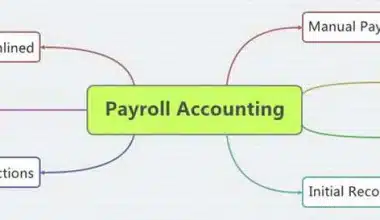What Exactly is GAAP?
GAAP, or Generally Accepted Accounting Principles, is a system of rules and procedures used in the United States to control business accounting and financial reporting. The Financial Accounting Standards Board (FASB) and the Governmental Accounting Standards Board (GASB) collaborated to create the US GAAP, which is a complete set of accounting practices that applies to both governmental and non-profit accounting.
Basically, all publicly traded corporations, as well as companies that publicly issue financial statements, are under obligations by US securities legislation to follow GAAP concepts and procedures.
However, in recent times, the International Accounting Standards Board (IASB) created International Financial Reporting Standards (IFRS) to be used in addition to or instead of GAAP. As a result, the International Financial Reporting Standards (IFRS) govern accounting standards in the European Union, as well as a number of nations in South America and Asia.
Why is GAAP Important?
Because of the Generally Accepted Accounting Principles, financial reporting is often standardized and transparent. Investors and other interested parties (such as a board of directors) can more easily interpret financial statements and compare the financial statements of one company to those of another. This is as a result of GAAP’s consistent presentation of financial reports.
GAAP also aims to make nonprofits and government organizations more accountable by forcing them to report their finances plainly and honestly.
In a nutshell, GAAP is intended to ensure that financial statements are presented consistently, This makes it easier for consumers to read and understand the information in the accounts.
Financial Analysis Applications
Meanwhile, it’s critical for financial analysts undertaking valuation work and financial modeling to have a firm grasp on accounting concepts. While this is crucial, financial models place a greater emphasis on cash flow and economic value. These are unaffected by accounting principles (other than for the calculation of cash taxes).
Background Story
Generally Accepted Accounting Principles (GAAP) were constituted partly in response to the Stock Market Crash of 1929. Another prominent factor was the accompanying Great Depression. Both events were thought to be caused, in part, by some publicly traded corporations’ less-than-honest financial reporting methods. Consequently, the federal government began collaborating with professional accounting organizations to develop standards and practices for accurate and consistent financial reporting.
Legislation such as the Securities Act of 1933 and the Securities Exchange Act of 1934 we instrumental in establishing these principles.
The GAAP has grown over time. This is, however on the basis of well-established concepts and standards, as well as best practices that have become widely accepted in various businesses.
Information Sources
GAAP is derived from a series of government-sponsored accounting institutions, the most recent of which is the Financial Accounting Standards Board (FASB). Accounting Staff Bulletins and other announcements issued by the Securities and Exchange Commission are only applicable to publicly-held corporations and are considered part of GAAP.
Meanwhile, the Accounting Standards Codification (ASC) codifies GAAP. It is available online and (more legibly) in paper form.
Who Uses the Generally Accepted Accounting Principles
Businesses reporting their financial performance in the United States largely use GAAP. The accounting framework used in most other nations is known as International Financial Reporting Standards or IFRS.
The IFRS, on the other hand, is more rules-based than GAAP. The IFRS body of work is substantially smaller, clearer, and easier to understand than GAAP because it focuses more on generic concepts. But because the International Financial Reporting Standards (IFRS) are still being developed, GAAP is considered to be the most comprehensive accounting system.
Convergence of GAAP and IFRS
There are various working groups aiming to reduce the disparities between the GAAP and IFRS accounting standards. In other words, there should only be minor variations in a company’s reported results if it moves between the two.
There is a declared intention to integrate GAAP with IFRS in the future, however, this has not yet happened. It’s probable that the frameworks will never be integrated, given recent conflicts of opinion that arose throughout multiple joint initiatives.
Who Is Responsible for GAAP?
While the federal government compels public corporations to produce financial reports that follow GAAP, it is not responsible for their development or upkeep. Instead, a few independent boards function as authorities on these principles, revising them on a regular basis to keep up with changing business practices and organizations.
Goodwill and interest rate swap regulations, for example, are two recent modifications that have provided private enterprises with more options.
Limitations
While GAAP aims to reduce instances of erroneous reporting, it is far from complete. Depending on their size, business classification, location, and worldwide presence, companies can still face challenges outside the scope of GAAP.
GAAP sometimes appears to take a “one-size-fits-all” approach to financial reporting, but this does little to alleviate the challenges that different businesses face. And because of their unique environments, state and local governments, for example, have struggled to implement GAAP.
However, new hierarchy proposals have emerged as a result of this to better accommodate these government entities.
Small firms have also had difficulty adopting GAAP. These standards may be excessively complex for their accounting requirements, and paying staff to prepare GAAP reports can be costly. As a result, the FASB has been working with the Private Company Council to revise the GAAP to include exceptions and alternatives for private companies.
What are the International Financial Reporting Standards (IFRS)?
While public firms in the United States are currently required to file financial statements in accordance with GAAP, private corporations are still allowed to use whichever standards system they like. This could change in the near future, depending on the SEC’s decision, which has been debating whether to move through with recommending worldwide standards in part or in whole.
According to Bloomberg BNA, SEC Chief Accountant James Schnurr emphasized that
“the IFRS-as-supplemental-reporting method would be only one alternative to complete implementation of the standards set by the International Accounting Standards Board.”
The FASB and the IASB are still collaborating to come up with and establish standards that can be used both domestically and internationally.
What Is the Difference Between International Financial Reporting Standards (IFRS) and Generally Accepted Accounting Principles?
According to many sources, the most significant distinction between GAAP and IFRS reporting standards is the number of regulations behind the principles. In some ways, this is accurate, according to Scott Taub of Compliance Week; GAAP principles are bound by more precise rules and guidelines than IFRS. Both sets of rules, however, are in place to guarantee that accountants stay truthful while on the job. The following is a comparison of what is required when reporting under both standards.
| GAAP | IFRS | |
| Balance Sheet | Separation of current and noncurrent asset and liability types is recommended. | Separation of these categories is essential. |
| Intangible Assets | Intangible assets are valued at their fair market value. | Intangible assets are only considered if they can be linked to a future benefit. |
| Documentation | It’s necessary to have a Statement of Comprehensive Income. | There is no need for a Statement of Comprehensive Income. |
| Inventory Write Downs | Reversals of inventory write-downs are not permitted. | Under some circumstances, inventory write-down reversals are feasible. |
| Extraordinary Items | New income is listed individually. | On the income statement, it’s grouped with other items. |
What Is GAAP Explain?
GAAP, or Generally Accepted Accounting Principles, is a system of rules and procedures used in the United States to control business accounting and financial reporting.
What Is GAAP Used For?
The GAAP is basically used to control business accounting and financial reports. all publicly traded corporations, as well as companies that publicly issue financial statements, are under obligations by US securities legislation to follow GAAP concepts and procedures.
What Does GAAP Mean and Why Is It Important?
GAAP, Generally Accepted Accounting Principles are important because it makes financial reporting more transparent and standard. Furthermore, investors and other interested parties (such as a board of directors) can more easily interpret financial statements and compare the financial statements of one company to those of another.
Which Countries Use GAAP?
Only the United States uses U.S. Generally Accepted Accounting Principles (GAAP)
- Management Reports: Guidelines for Management Reporting
- Credit Reporting Bureau: What is Credit Reporting Bureau?
- Cash Accounting: Best Cash Accounting Methods In 2023 (+ Detailed Guide)
- ACCOUNTING PROCESS: Understanding the 8 Steps in the Accounting Cycle
- ACCOUNTING CYCLE: What is Accounting Cycle & All you Need






